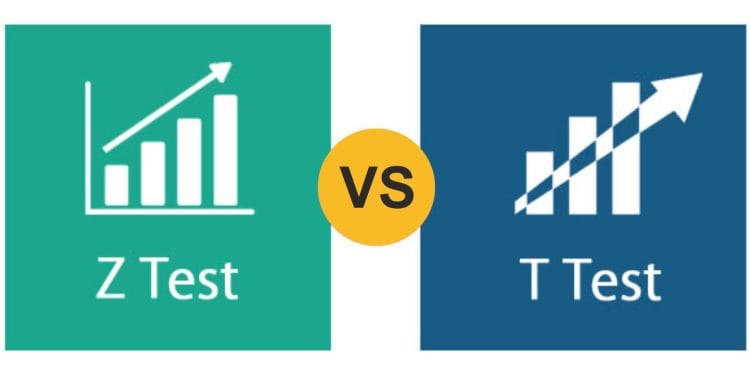When it comes to statistical hypothesis testing, two commonly used methods are the Z-test and the T-test. These tests help researchers make informed decisions and draw reliable conclusions from collected data. In this article, we will explore Z-test vs T-test and discuss when and how to use each of them.
Z-Test:
The Z-test is a statistical test that is used when the sample size is large and the population standard deviation is known. It is based on the standard normal distribution, also known as the Z-distribution. The Z-test allows us to determine whether the mean of a sample differs significantly from a known population mean.
One of the key advantages of the Z-test is its simplicity and efficiency. It is particularly useful when analyzing large datasets as it provides reliable results. However, the Z-test may not be appropriate when the population standard deviation is unknown or when the sample size is small.
T-Test:
T-tests, on the other hand, are used when the population standard deviation is unknown or when the sample size is small. The T-test is based on the Student’s T-distribution, which takes into account the degrees of freedom and provides more accurate results when working with smaller sample sizes.
There are three main types of T-tests: the independent samples T-test, paired samples T-test and the one-sample T-test.
The independent samples T-test compares the means of two independent groups, the paired samples T-test compares means from the same group under different conditions and the one-sample T-test compares a sample mean compared to a known population mean.
The T-test is versatile and widely used, making it valuable in various research fields. Its ability to handle smaller sample sizes and unknown population standard deviations makes it a popular choice when working with limited data.
Key Differences:
Sample Size: Z-test is suitable for larger sample sizes, while T-test is more appropriate for smaller sample sizes.
Population Standard Deviation: Z-test assumes the population standard deviation is known, while T-test works with unknown population standard deviations.
Test Distribution: Z-test uses the Z-distribution (standard normal distribution), while T-test uses the Student’s T-distribution.
Degrees of Freedom: T-test accounts for degrees of freedom, which adjusts for the uncertainty caused by smaller sample sizes.
Choosing the Right Test:
To determine whether to use a Z-test or a T-test, you need to consider the characteristics of your data. If you have a large sample size and a known population standard deviation, the Z-test is suitable. On the other hand, if you have a smaller sample size or an unknown population standard deviation, the T-test is more appropriate.
Conclusion:
In the realm of statistical hypothesis testing, the choice between Z-test and T-test depends on factors such as sample size and knowledge of the population standard deviation. Both tests have their strengths and should be used accordingly to ensure accurate and reliable results.
Understanding the differences between Z-test and T-test equips researchers with the knowledge to select the most suitable test for their data, enhancing the quality of statistical analysis and decision-making processes.

















































